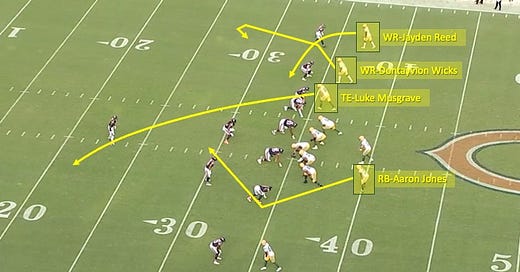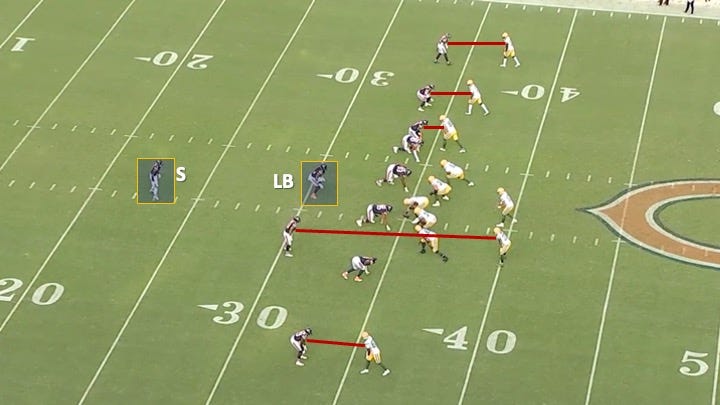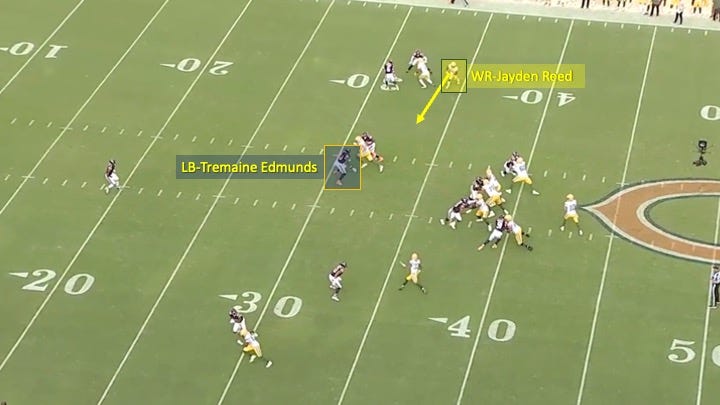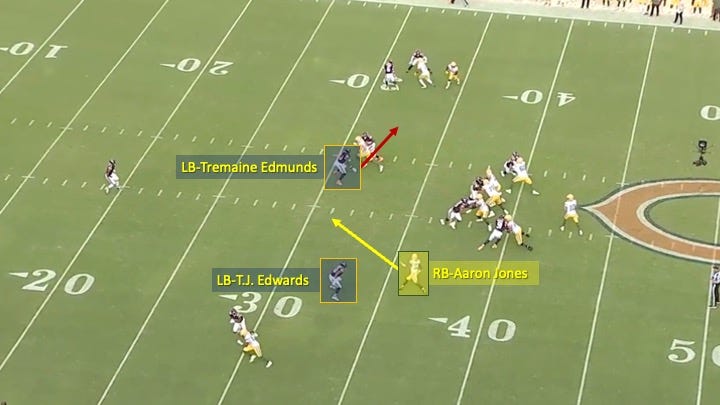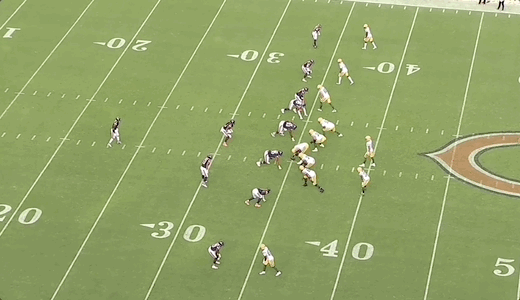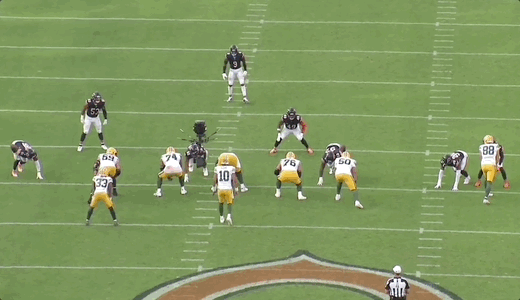Beating man coverage is critical to winning in the NFL. Often, it comes down to a receiver’s ability to win 1-on-1 matchups and the quarterback’s ability to make accurate throws into tight spaces. However, there are also a number of ways to create open receivers with scheme.
Receive breakdowns like this directly in your inbox by subscribing here:
In traditional cover-1 (man-free), there are always two defenders in the middle of the field, one deep and one underneath. Defenses will often mix up how they get to and play this look. Sometimes a safety will drop down into the middle of the field. Sometimes it will be a linebacker occupying that area. Either way, most coverage defenders on the field will play to their help inside (depending on the alignment of the offense, of course).
So the key for the offense is to remove, manipulate, or put those help defenders in the middle of the field into conflict. Below are some of our favorite examples of how teams around the NFL have done this.
This first play was a 4th-and-3 from the Packers’ blowout win over the Bears in Week 1 of the 2023 season.
This was a high probability man-coverage situation. From the way the Bears matched up pre-snap to the Packers’ 3x1 formation, they appeared to be in cover-1 with the highlighted safety and linebacker as the two inside help defenders:
The way Matt LaFleur would put the underneath hole defender (linebacker Tremaine Edmunds) into conflict was a thing of beauty.
To the right, the #1 receiver (Jayden Reed) would run a shallow cross with the #2 receiver (Dontayvion Wicks) taking his route to the outside to pick Reed’s man.
The #3 receiver (tight end Luke Musgrave) would also run a deep over route, clearing out the area.
To the left, Aaron Jones would run an angle route out of the backfield:
Musgrave’s route created traffic for Edmunds to have to fight through. With two other receivers coming from that side, this indicated to Edmunds that the target of the play would likely be to the offense’s right. And indeed, Jayden Reed’s route was one of Jordan Love’s options:
So Edmunds turned his attention towards Reed. The problem for the Bears was that Jones’ route coming from the other side would also target his area:
Linebacker T.J. Edwards, who was matched up on Jones, was trying to take away the outside and playing to his help in the middle (Edmunds).
But Edmunds ultimately abandoned the area to defend Reed’s route. That left Jones in a pure 1-on-1 vs Edwards (a mismatch) with no help inside. The result was an easy 35-yard touchdown:
Take another look from the end zone angle and you can see that the choice was simple for Love: Read the hole defender (Edmunds) and then throw it where he isn’t. Edmunds bit hard to the right, so Love threw left to Jones:
“Mesh” is another great concept against cover-1 because it creates traffic in the middle of the field for those man-coverage defenders who are playing with outside leverage. Defenders end up getting picked, rubbed, or are forced to hesitate/divert their path, leading to separation and lots of yards after the catch.
Check out our entire “Mesh” series here:
Mesh
Mesh Rail
Mesh Traffic
A great example came in Super Bowl LVIII with just 16 seconds left in the game and the Chiefs trailing the 49ers by 3. This was a 3rd-and-7.

